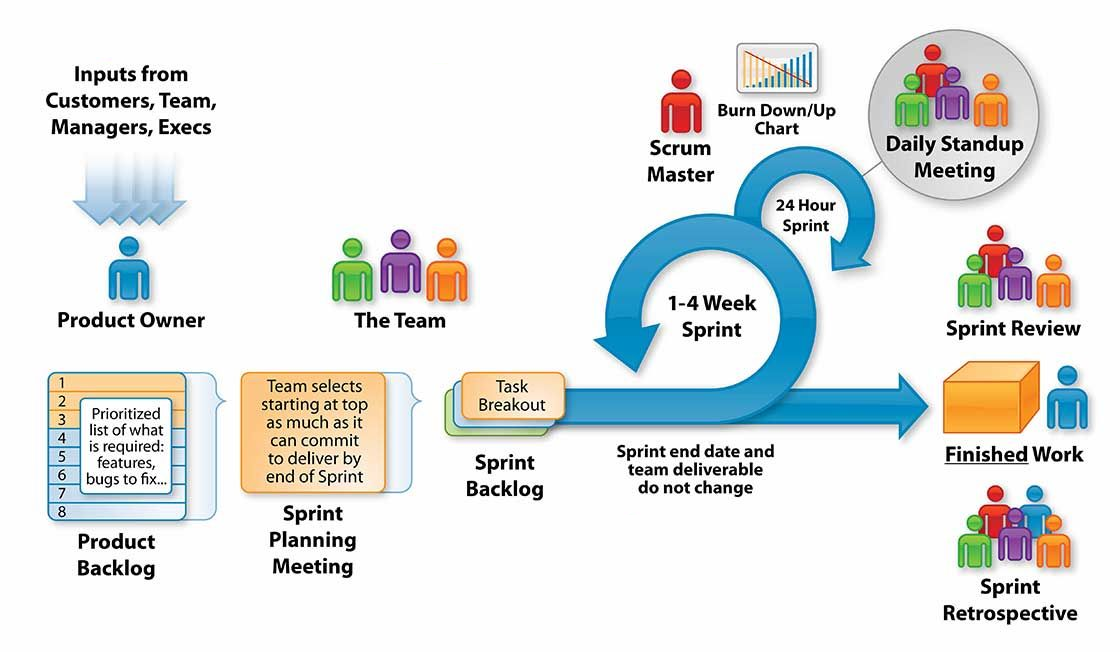Agile Project Mangement
What is Agile Project Management?
Agile Project Management is a flexible approach to managing projects, particularly in software development. Instead of planning everything upfront, it focuses on delivering work in small, manageable pieces called iterations or sprints. This method allows teams to adapt quickly to changes and continuously improve the product.

How are Agile Projects Managed?
In Agile development, Scrum plays a crucial role in defining what Agile project management is. Therefore, the Scrum model is utilized in the Agile development process, which includes three important roles.
- Product Owner - The Product Owner is responsible for managing the business aspects of the project by ensuring that the right product is built effectively. A good Product Owner balances competing priorities and is empowered to make decisions about the product while being readily available to the team.
- Scrum Master - The Scrum Master serves as the team's trainer, assisting team members in collaborating more effectively. A good Scrum Master focuses on removing obstacles that hinder the project's progress, facilitating discussions and meetings, and performing typical project management tasks such as tracking progress and addressing issues.
- Scrum Team - The team will take on agile project management roles to identify how to achieve the product goals. Team members will collaboratively decide who will work on specific technical practices and determine the necessary tasks to meet the quality goals that have been established for success.
Where does the Scrum Master fit in Agile Project Manager roles and responsibilities?
In Agile Project Management, the Scrum Master is often seen as the modern equivalent of a Project Manager. However, unlike traditional Project Managers, the Scrum Master is not held responsible for a project's success or failure.
The responsibilities of the Scrum Master are primarily focused on the process. He or she is an expert in the Scrum framework and works to help the team perform at its highest level. The Scrum Master does not have the same responsibilities as a traditional Project Manager, such as managing costs, scope, personnel, or risk.
Who would handle conventional project manager duties in Agile development?
In traditional project management, the Project Manager is solely responsible for managing various aspects, including scope, cost, personnel, risk, communication, quality, and procurement.
Agile project management is particularly useful when a product manager or customer questions decisions, as this can lead to negative outcomes. Agile addresses these challenges by distributing responsibilities among the team members.
For example, the Product Owner is assigned the responsibility of managing schedule trade-offs and scope. Quality management becomes a shared responsibility among the team, the Scrum Master, and the Product Owner. Additionally, traditional roles are assigned to other team members within the Agile project management framework.
Advantages
In the field of project management, Agile offers several benefits for project teams, sponsors, customers, and leaders, including:
- Faster deployment of solutions.
- Minimization of resources, leading to reduced waste.
- Increased adaptability and flexibility to change.
- More focused efforts, resulting in higher success rates.
- Quicker turnaround times.
- Faster detection of defects and issues.
- An optimized development process.
- A lightweight framework.
- Optimal project control.
- Greater focus on specific customer needs.
- More frequent feedback and collaboration.
These advantages contribute to a more efficient and effective project management approach.
